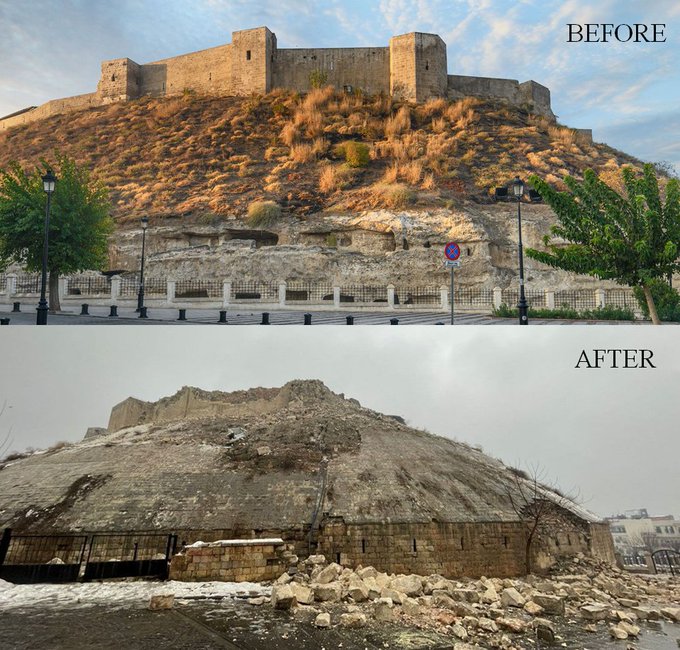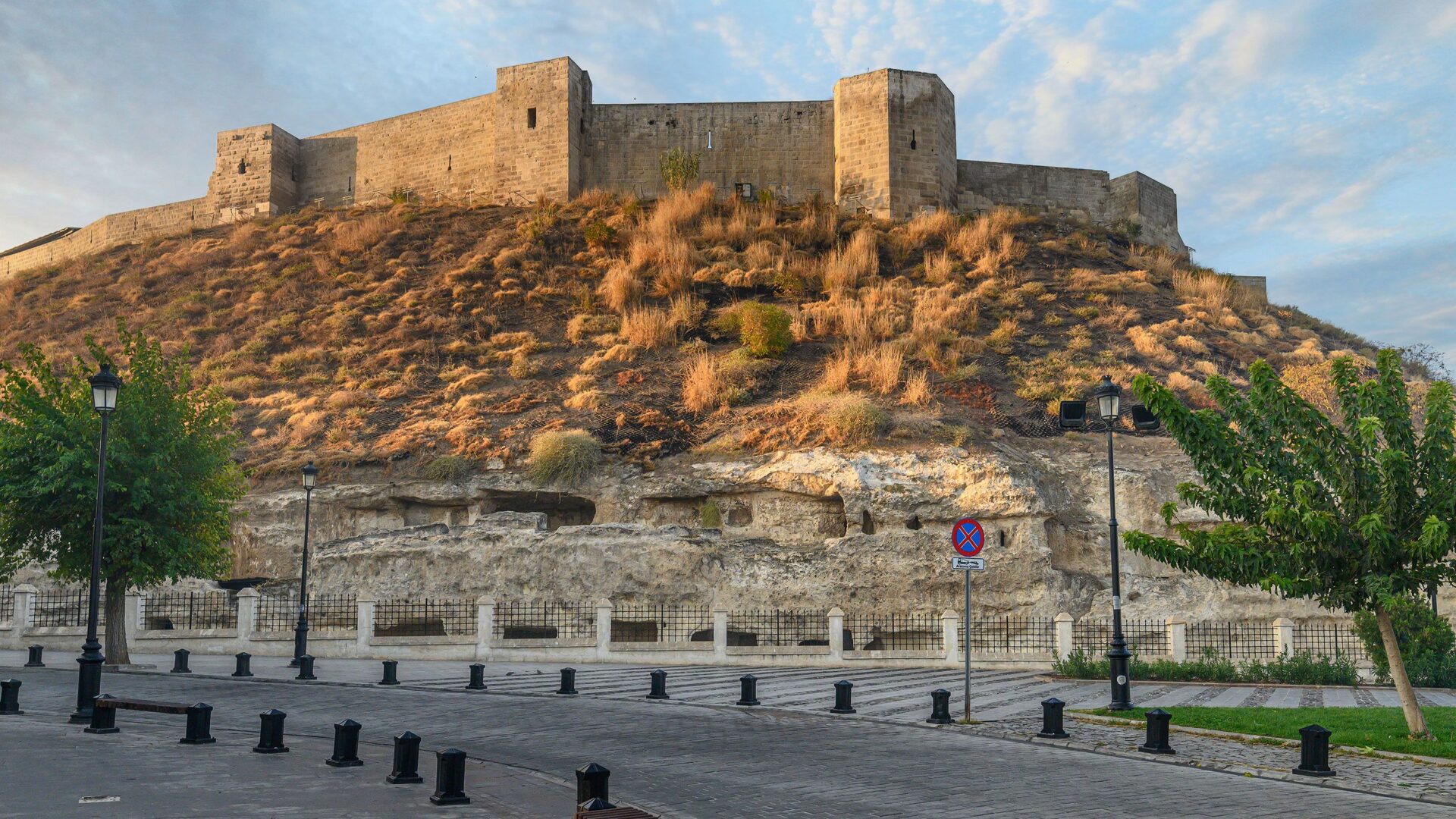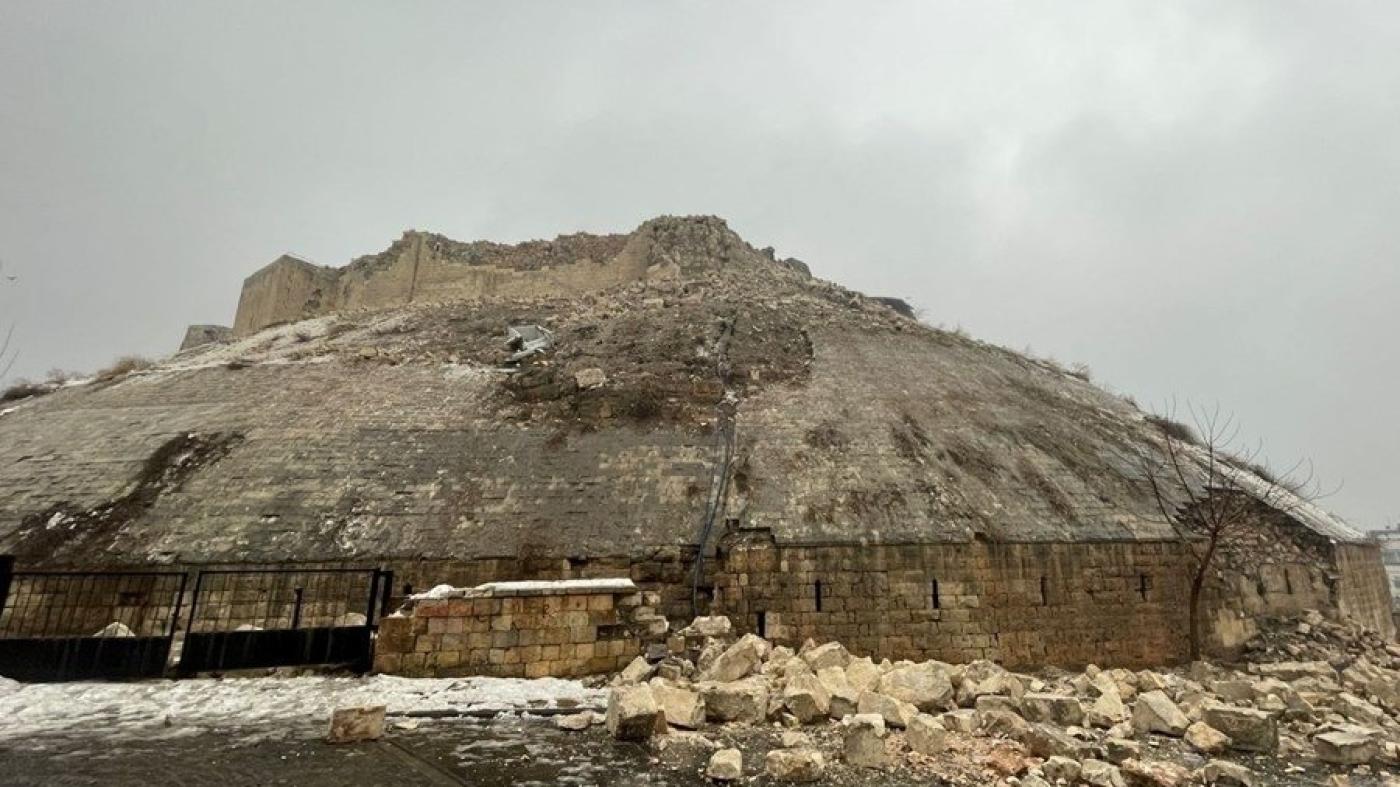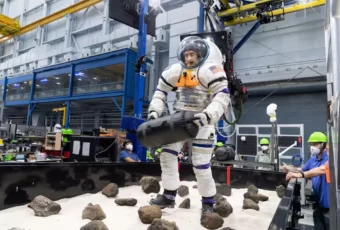
Before And After The Earthquake
The devastating earthquake caused enormous damage throughout the area, and in addition to the devastating loss of life, many historic sites were also significantly damaged or even totally destroyed. This includes the Gaziantep Castle, which is a Roman era castle that is located in the Anatolia region in Southeastern Turkey.
Photos captured is the area show the extreme damage caused to the castle, where large swaths of its stone walls have collapsed down to the side of the hill it was built on, and several of the bastions of the castle have also completely collapsed. The 17th century Şirvani Mosque, which is located right next to the Gaziantep Castle, saw a partial collapse of its dome.
The castle was built sometime around the 2nd and 3rd centuries CE when the Roman Empire was in control of Anatolia. It was considered to be one of the best preserved castles in Turkey. Located on the hill of Gaziantep, it had a diameter of 328 feet and had 36 bastions and 12 towers.

The Roman Era Gaziantep Castle
In the 6th century CE, it was renovated and expanded by Byzantine emperor Justinian I, and in 1557, was once again touched up by Ottoman ruler Suleiman the Magnificent.
This region of the Levant is found at the crossroads of the Anatolian, Arabian, and African tectonic plates, which means its more geologically active than other areas.
Dr. Catherine Mottram, a senior lecturer in Structural Geology and Tectonic at University of Portsmouth said: “Earthquakes occur when locked portions of faults suddenly ‘break’, resulting in rocks moving rapidly during catastrophic failure events. Aftershocks are usually lower magnitude earthquakes that happen as the crust settles and recovers in the new position.”
She continued: “There is the potential that the 7.5 magnitude shock was related to a second period of movement along a different depth or along strike location on the fault, or on a different fault strand. Geophysicists will be able to reconstruct exactly where movement occurred along the fault by reconstructing data collected by seismometers in the region, so more information should come out in the coming days and weeks about exactly what happened.”

The Castle Was Significantly Damaged








